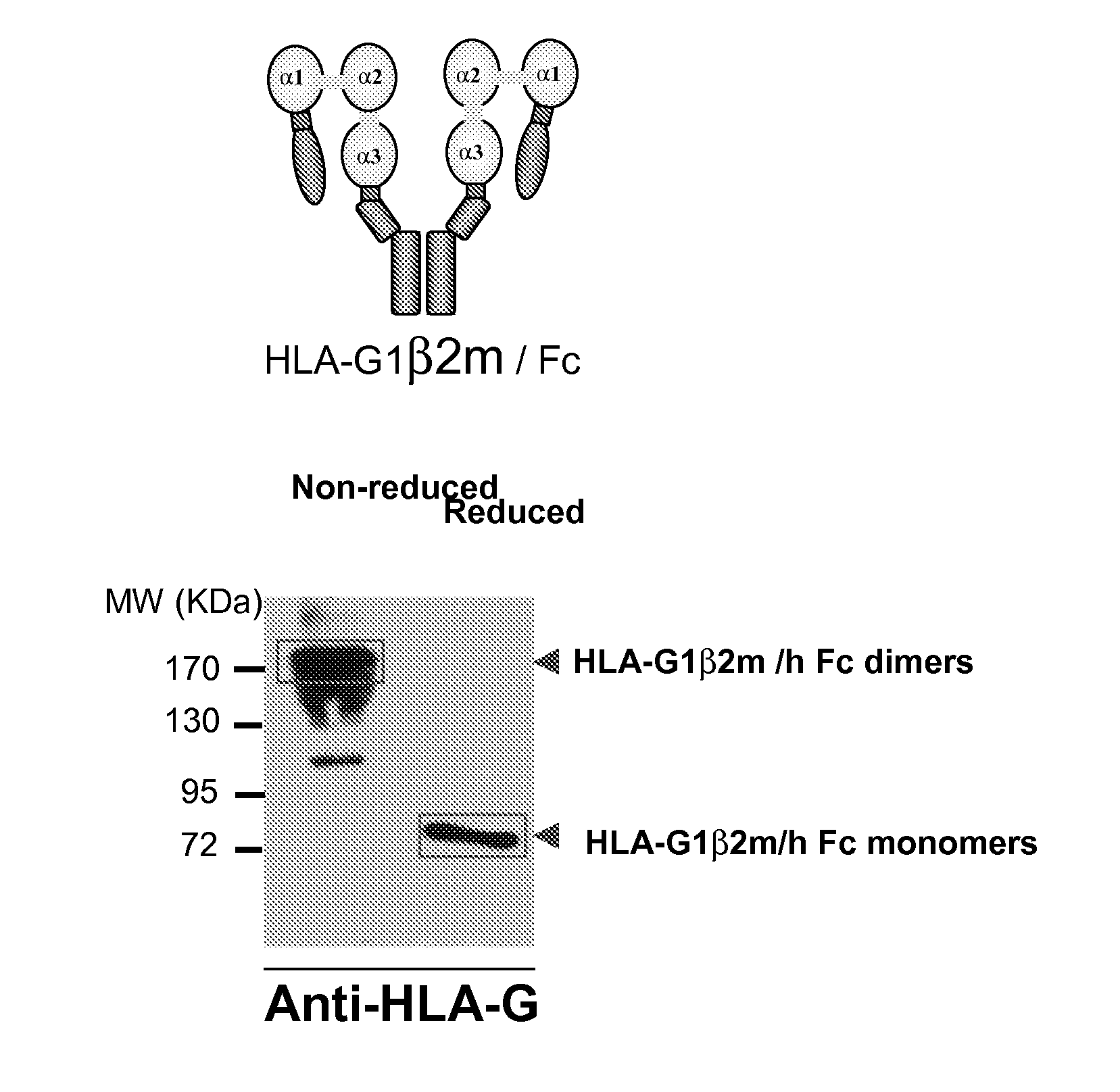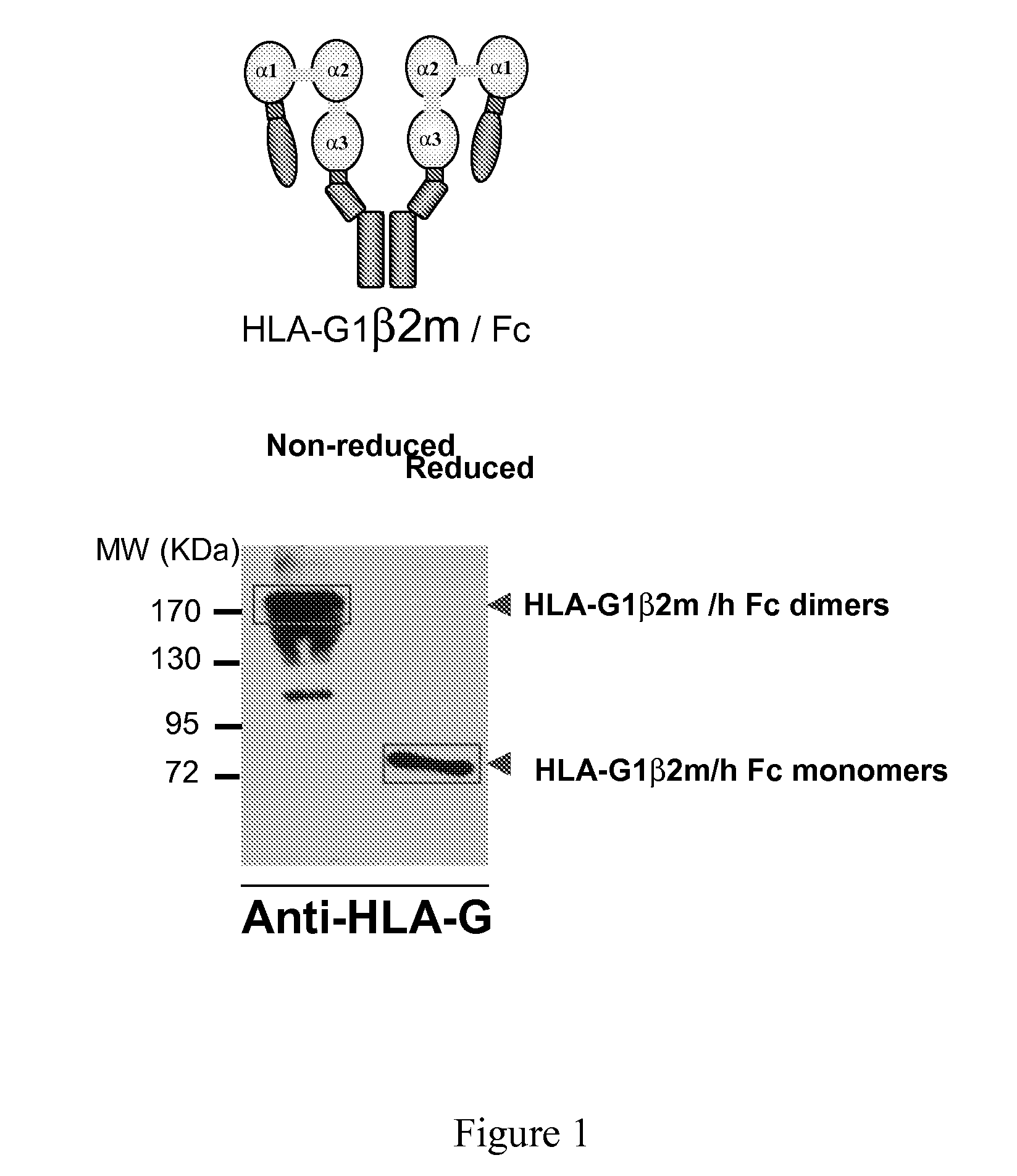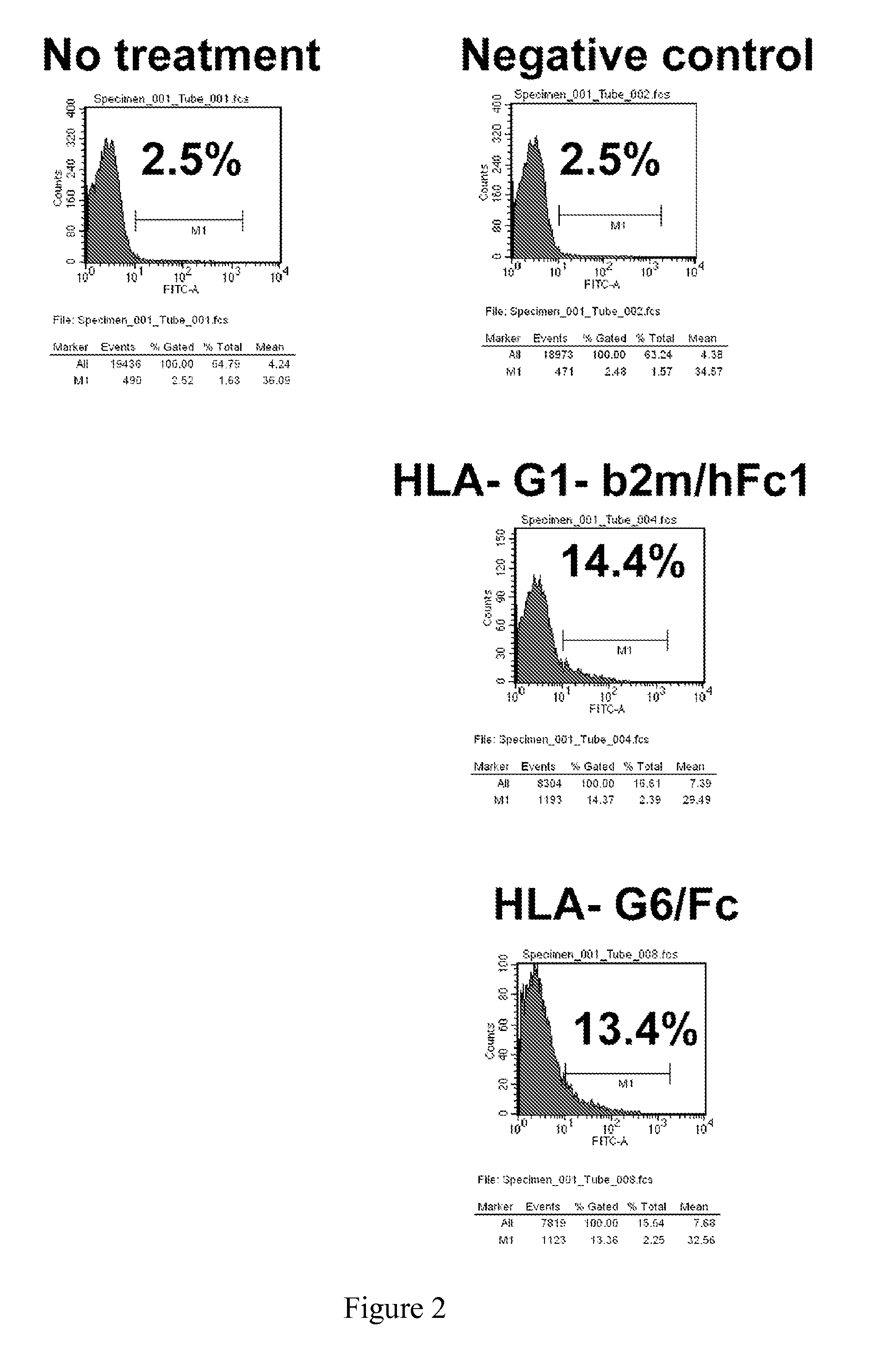Hla-g proteins and pharmaceutical uses thereof
a technology of hla-g proteins and pharmaceutical applications, which is applied in the field of hla-g proteins, can solve the problems of no results or experimental data to show that such targeting fusions are active, and achieve the effect of inhibiting tissue rejection
- Summary
- Abstract
- Description
- Claims
- Application Information
AI Technical Summary
Benefits of technology
Problems solved by technology
Method used
Image
Examples
example 1
Cloning and Synthesis of HLA-G6-Fc
[0116]The HLA-G cDNA sequence of leader sequence, α1, α3 and intron 4 was amplified by PCR with template of pcDNA from HLA-G6. This sequence was amplified by PCR to introduce Age I and Xho I restriction sites with the following primers:
(SEQ ID NO: 7)5′AAAACCGGTATGGTGGTCATGGCGCCCCG 3′and(SEQ ID NO: 8)5′AAACTCGAGAGGTCTTCAGAGAGGCTCCTGCTT′.
[0117]This amplified sequence was digested with Age I and Xho I restriction enzymes and then ligated into the pFUSE-hFc1 vector previously digested with Age I and Xho I. The resulting cDNA sequence is described in SEQ ID NO: 1 and the amino acid sequence is described in SEQ ID NO: 2.
[0118]The protein was produced as disclosed in the materials and methods.
example 2
Cloning and Synthesis of HLA-G1-B2M-Fc
[0119]The sequence coding for the human Beta-2 microglobulin was amplified by PCR with primers B2M Sig Mlu I Sph IS cgtc GCATGC ACGCGT CG ATG TCT CGC TCC GTG GCC (SEQ ID NO: 9) and B2M-L-a1 AS TCATGGAGTGGGAGCC GGATCCGCCACCTCC GGATCCGCCACCTCC GGATCCGCCACCTCC CATGTCTCGATCCCACTT (SEQ ID NO: 10) that allowed to remove stop codon and to introduce a spacer corresponding to amino acid the sequence (GGGS)x2.
[0120]In parallel, the cDNA sequence corresponding to α1, α2 and α3 domain of HLA-G1 was amplified by PCR with primers HLA-Ga3 Xho Sal AS tatg GTCGAC CTCGAG CGC AGC TGC CTT CCA TCT CAG CAT GAG (SEQ ID NO: 11) and HLA-G a1 Mlu Sph S acgtc GCATGC ACGCGT CG GGC TTC CAC TCC ATG A (SEQ ID NO: 12) that allowed to remove peptide leader sequence and stop codon. Beta-2 microglobulin and α1, α2, α3 domain of HLA-G1 PCR fragments were both digested with Eag I restriction enzyme purified and ligated together. The Beta-2 microglobulin / α1, α2, α3 domain fusion seq...
example 3
Cloning and Synthesis of HLA-Gα1-Fc
[0122]The cDNA sequence of HLA-G alpha-1 domain was amplified by PCR using primers 5′AAA GAA TTC GGG CTC CCA CTC CAT GAG GT 3′ (SEQ ID NO: 15) and 5′AAA GAT ATC CCA CTG GCC TCG CTC TGG TTG3′ (SEQ ID NO: 16). After restriction enzyme digestion of the alpha-1 PCR fragment and pFUSE-mFc2 vector (Invivogen) with restriction enzyme EcoRI and EcoRV, the alpha-1 PCR fragment was ligated into the pFUSE-mFc2 vector that contain the signal sequence of IL-2 and the Fc region of mouse IgG2a. The resulting cDNA sequence is described in SEQ ID NO: 5 and the amino acid sequence is described in SEQ ID NO: 6.
[0123]The protein was produced as disclosed in the materials and methods.
PUM
| Property | Measurement | Unit |
|---|---|---|
| nucleic acid | aaaaa | aaaaa |
| soluble | aaaaa | aaaaa |
| affinity | aaaaa | aaaaa |
Abstract
Description
Claims
Application Information
 Login to View More
Login to View More - R&D
- Intellectual Property
- Life Sciences
- Materials
- Tech Scout
- Unparalleled Data Quality
- Higher Quality Content
- 60% Fewer Hallucinations
Browse by: Latest US Patents, China's latest patents, Technical Efficacy Thesaurus, Application Domain, Technology Topic, Popular Technical Reports.
© 2025 PatSnap. All rights reserved.Legal|Privacy policy|Modern Slavery Act Transparency Statement|Sitemap|About US| Contact US: help@patsnap.com



